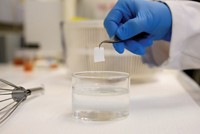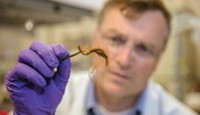Advertisement
Grab your lab coat. Let's get started
Welcome!
Welcome!
Create an account below to get 6 C&EN articles per month, receive newsletters and more - all free.
It seems this is your first time logging in online. Please enter the following information to continue.
As an ACS member you automatically get access to this site. All we need is few more details to create your reading experience.
Not you? Sign in with a different account.
Not you? Sign in with a different account.
ERROR 1
ERROR 1
ERROR 2
ERROR 2
ERROR 2
ERROR 2
ERROR 2
Password and Confirm password must match.
If you have an ACS member number, please enter it here so we can link this account to your membership. (optional)
ERROR 2
ACS values your privacy. By submitting your information, you are gaining access to C&EN and subscribing to our weekly newsletter. We use the information you provide to make your reading experience better, and we will never sell your data to third party members.
Analytical Chemistry
Chemical traces yield ‘lifestyle sketches’
Compounds left behind on personal objects such as cell phones reveal much about the daily activities of the user
by Celia Henry Arnaud
November 16, 2016
| A version of this story appeared in
Volume 94, Issue 46

People leave chemical traces wherever they go, especially when they touch or handle objects. Those chemicals can come from a variety of sources, including personal care products, food, or medications. A chemical analysis of those traces can be used to draw a “lifestyle sketch” of the person who left them behind.
A team led by Pieter C. Dorrestein and Amina Bouslimani of the University of California, San Diego, has shown they can use such analyses to match up cell phones and their owners after taking swab samples from the phones and the owners’ hands (Proc. Natl. Acad. Sci. USA 2016, DOI: 10.1073/pnas.1610019113). They envision that their approach could help assemble profiles of suspects in criminal investigations, among other things.
“We thought, ‘Let’s see if these chemicals can be transferred to objects that we use daily, such as phones, keys, computers, or wallets,’ ” Bouslimani says. “We chose phones first because these are personal objects that we use every day, several times a day.”
With a combination of mass spectrometry and informatics methods, the researchers analyzed eight hand samples and four phone samples from 39 volunteers to generate personalized profiles. Those profiles included compounds such as medications and their metabolites. In some cases, they found compounds, such as the insect repellent DEET, that the individuals reportedly hadn’t used in months.
Using samples from the back of the phones, the researchers were able to match 69% of the phones with their owners. Although the approach didn’t match all phones with their owners, it does “narrow down your search space,” Dorrestein says.
“There is great value in using personal objects such as cell phones to detect any personal lifestyle information about the person associated with the object,” says José R. Almirall, director of the International Forensic Research Institute at Florida International University. Almirall notes that the methods need to be validated and standardized, however, before they could be used in forensic analyses.
“It is incorrect to think of the approach as an identification method at this time—it is a profiling method,” Dorrestein says. “What we can do is look at each individual molecule and say what the lifestyle of that person looks like. This is important when investigators do not have evidence such as DNA or fingerprint matches as leads to go on.”





Join the conversation
Contact the reporter
Submit a Letter to the Editor for publication
Engage with us on Twitter